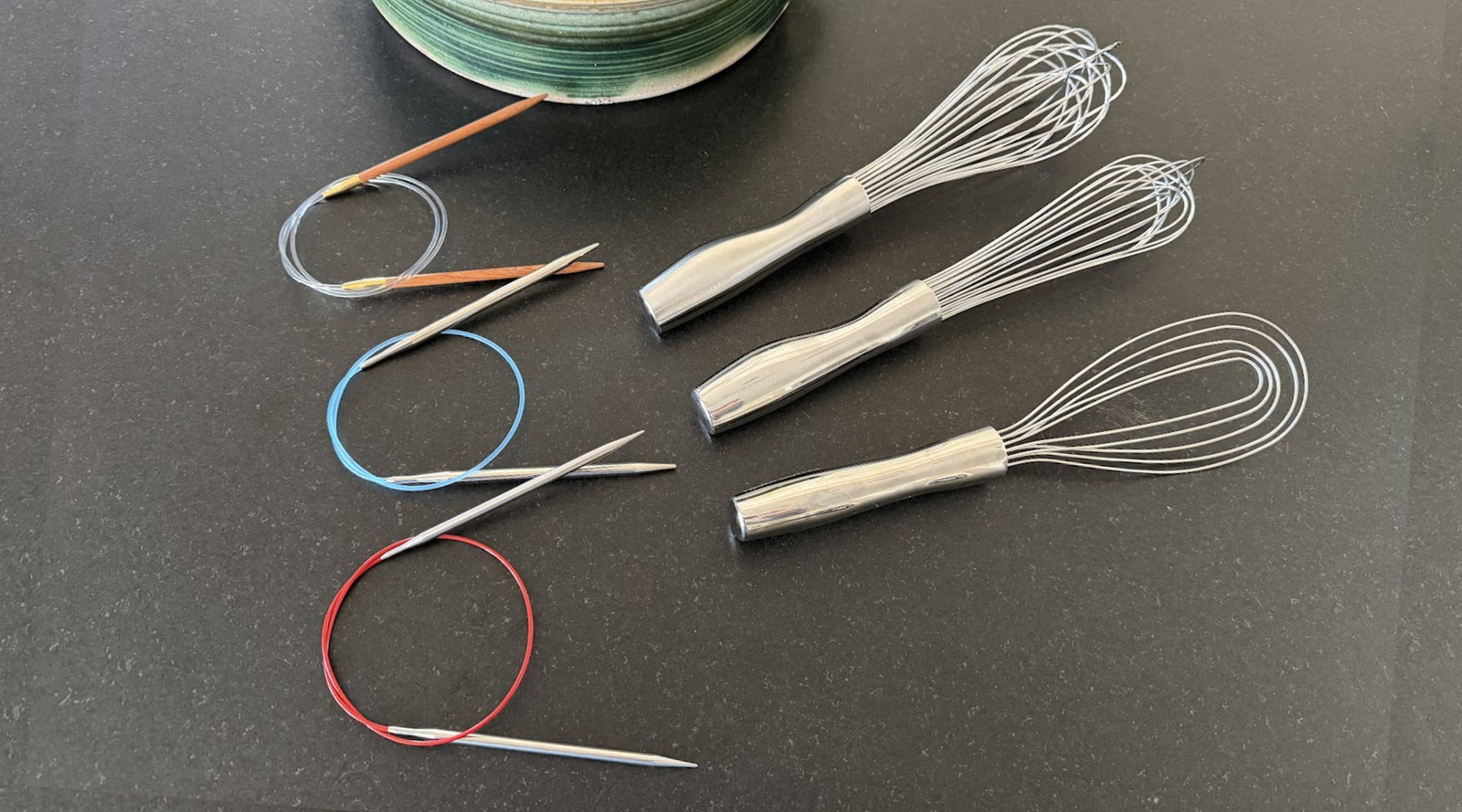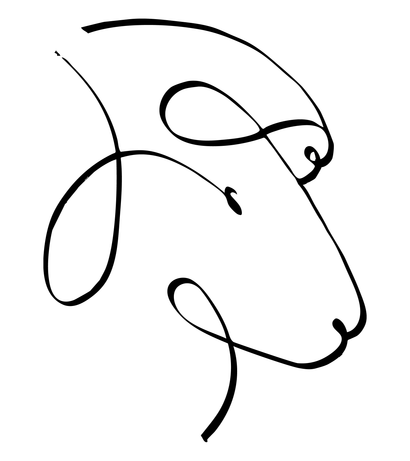Free shipping on all domestic orders over $150
Free shipping on all domestic orders over $150
Shop
Add description, images, menus and links to your mega menu
A column with no settings can be used as a spacer
Link to your collections, sales and even external links
Add up to five columns
Add description, images, menus and links to your mega menu
A column with no settings can be used as a spacer
Link to your collections, sales and even external links
Add up to five columns

Choosing the Right Knitting Needle Tips — Why Pointier Isn’t Always Better
November 17, 2025 4 min read 1 Comment
Every Thanksgiving, I make gravy the way my mother taught me—slowly, intentionally, with a glass of wine nearby and everyone wandering through the kitchen “just to check.” One year, as I was whisking the pan drippings, I casually mentioned that my whisk’s handle was coming loose and I probably needed a new one.
The next thing I knew, my darling husband had ordered me not one, but three new whisks, each each a completely different shape.
Who knew that a whisk was not just a whisk? Not me, certainly.
I turned to the Google and found the following:
- The standard whisk has a flat little sister called a roux whisk that keeps flour from clumping and makes gravy like a dream.
- The French whisk is long and narrow so it can scrape into the corners of a saucepan.
- The balloon whisk is all about air—perfect for whipped cream and egg whites.
Well then. For years, I had been perfectly content with my middle-of-the-road all-purpose whisk. But now that I’ve experienced the difference, I wouldn’t give up any of those three shapes. Each one does something beautifully that the others don’t.
And, of course, it made me think about knitting (because what doesn't?) and knitting needles.
Just like whisks, not all knitting needle tips do the same job. And understanding which tip works best for which yarn and which type of project can completely transform your knitting experience.
Why Needle Tips Matter More Than We Realize
Knitters often assume that the “best” needle is the sharpest needle. That’s what all the experienced lace knitters say, isn’t it?
“A lace tip will make everything faster, easier, and more precise.”
But a pointy tip is simply a tool, and tools are purpose-driven.
- Some projects absolutely need that precision.
- Others need gentleness.
- Most projects are best with something in between.
Before we talk about tip shapes, though, let’s look at materials.
Wood vs. Metal Needles — Why Material Matters
Your needle material is the foundation. The tip shape fine-tunes the experience.
Wood Needles
- Warm in the hand
- Gentle and slightly grippy
- Moderate tip sharpness
- Excellent for beginners or slippery yarns
Metal Needles
- Smooth and fast
- Can be extremely sharp
- Durable tips
- Best for precision work, lace, and tight stitches
The Three Main Knitting Needle Tip Types
1. Extra-Pointy / “Lace” Tips
Best for:
- Lace weight and fine fingering yarns
- Small needle sizes
- Lace and cables
- ssk, k2tog tbl, nupps, and any maneuver requiring access to tight spaces
Why they’re wonderful:
- Precision
- Control
- Ability to “scoop” tiny loops cleanly
- Makes nupps and double decreases easier
Important reality check:
Many knitters believe that very pointy tips prevent yarn splitting. The truth is that when you're knitting a yarn that tends to split, a sharp tip can make it worse by slipping between loose plies.
Pointy tips are fabulous—but not universal.
2. Standard Tips (Your All-Purpose Needle)
Best for:
- DK, worsted, and Aran yarns
- Stockinette, garter, ribbing, and simple textures
- Most everyday knitting
Standard tips are the all-purpose whisk of the knitting world—balanced, reliable, and unfussy.
Examples include:
- Lykke Driftwood (all colors)
- Rowan needles
- Addi Rockets and Rocket Squared
- Addi Olivewood
- Addi Natura
Most knitters could happily use standard tips for 85% of their projects.
3. Blunt Tips / Ball-Tip Needles
This is the category knitters don’t talk about enough.
Best for:
- Bulky and super bulky yarns
- Bouclé
- Loopy, textured, or novelty yarns
- Splitty medium-weight yarns
- Big, relaxed-gauge projects
Why they matter:
A blunt tip glides between stitches rather than piercing the fibers.
Just like sewing machine needles:
- Woven fabric requires a sharp needle.
- Knit fabric requires a ballpoint needle that slips between the knit stitches.
The same logic applies to knitting needles. A blunt tip is sometimes the only tool that prevents snagging, splitting, and frustration.
The classic example is Addi Turbo needles.
Why “Pointier” Doesn’t Mean “Better”
- A sharp tip can make splitting worse.
- The wrong tip can slow you down.
- Sharp tips can irritate the tip of your finger depending on how you knit.
- Blunt tips are not “beginner needles”—they are specialized tools.
Just like whisks, you need the right shape for the right job.
A Quick Word About the New Lykke Flight Needles
The newest—and probably the sharpest—needle on the market is the Lykke Flight.
I’ll be talking about these in detail in Wednesday’s video, but here’s the short version:
- High-quality surgical stainless steel
- Beautifully smooth
- Truly extra-pointy
- Excellent joins
- No-memory cable
- Perfect for lace, precision knitting, and fine fibers
They’re a wonderful needle for projects that truly benefit from a sharp tip. And when your project doesn’t—well, you’ll be happier with something gentler.
Depending on where you are in your knitting journey, you may not have any sense of the difference between needles and tips—and that’s okay. I cooked perfectly well for more than 40 years with just one whisk, just as my mother and grandmother did.
But when you use a tool perfectly suited to the job at hand, you notice. And suddenly, everything you’re doing is easier and better.
What's your favorite knitting needle and type of tip? Tell me in the comments!
Warmly,
Ellen


Liz Bush
November 18, 2025
I do love my Lykke Interchangeables. Excited to learn more about the Lykke Flight. Now I want more whisks and knitting needles. Thanks for keeping us in the know about all things! :) Liz